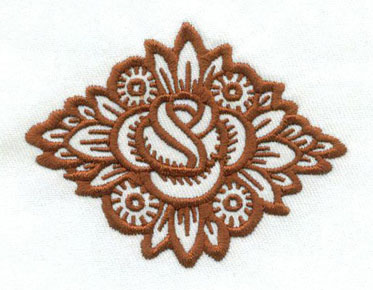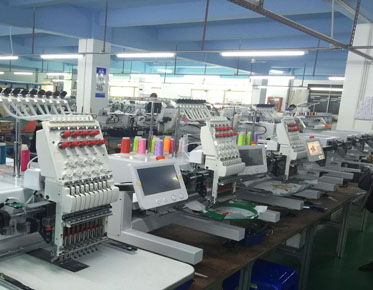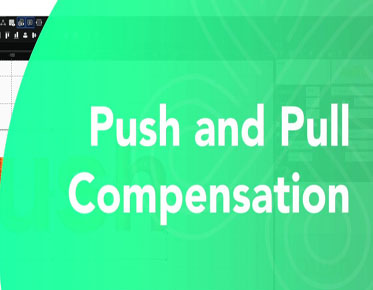Top Embroidery Digitizing Software in 2022
Embroidery Digitizing software is how embroidery businesses grow their sales, increase their productivity, and deliver products faster to customers. That is why we developed Embroidery Software, the most powerful embroidery software for your business.
Searching for embroidery software in Google can be quite confusing, so we’re here to help you cut through the clutter and find the best software for your needs.
Things to consider when looking into
embroidery software
Embroidery software describes a fairly broad range of tools that embroiders use to design, digitize, price, and even outsource your embroidery.
Before you buy, decide what you're using embroidery software for:
Designing and digitizing?
Simply creating files to embroider?
Or managing an entire business?
Embroidery is one of the fastest-growing segments in custom decoration.
Because you can embroider a wide range of products – from polo shirts, to hats, to medical uniforms – the embroidery process is complex. Your shop, your machines, and your embroidery business are set up to your specifications. The nuts-and-bolts of how you embroider vary from business to business.
Frustratingly, there are often large operational gaps in common embroidery software. You simply can't run a business off them.
Some programs haven’t seen updates since the 1990s, aren’t accessible from the internet or your phone, or are simply insufficient for actually managing a growing business.
But what makes embroidery businesses similar? They all need strong processes for handling customers and delivering orders effectively. There are industry-specific needs: quote approvals, art approvals, stitch-outs (or mockup) approvals, shipping, online stores, wholesaler access, and more.
What can great embroidery software do?
Great embroidery software works with the embroidery machines you use in your shop, can be used by your staff, and helps your business operate smoothly.
Stitch counts
If you’re like most embroidery shops, your
stitch counts are reflected in your embroidery pricing.
More stitches (usually) equal a higher
price – and more pieces equal a lower price per piece.
Good embroidery design and digitization software can help you get accurate estimates of stitch counts.
Pricing your embroidery
How do you price your embroidery?
Do you just wing it, hoping that each job
ends up profitable? Sometimes embroidery jobs work perfect, and your margins
are great. The customer is happy. You ship everything on time.
But sometimes, there’s a problem – whether it’s because the job took too long to quote and get approved, a shipping or purchasing error, or simply miscommunication with a customer or employee.
Can you account for those issues too? Yes. Use price matrices to create multiple tiers of service for your embroidery business. “Good, better, best – that’s the level of service we offer,” says Campus Ink co-owner Steven Farag. Your “Good” tier should likely be priced higher than your current offerings. After all, the goal is to maintain profitability.
Steven Farag laid out the crux of pricing issue with embroidery: “How can anyone expect to turn a profit if you’re racing to the bottom to compete with a giant embroidery shop that can charge way less than $1 per 1,000 stitches?”
Digitizing
Print shop owners are endlessly familiar with digitizers.
A requisite for stellar embroidery work, embroidery digitization is simply digitizing an embroidery design for a given embroidery machine. Digitization is just a set of instructions for an embroidery machine. It tells the machine what to stitch, where to stitch it, which colors to use, and many more crucial details.
Note: with Printavo, you can seamlessly send DST and other embroidery file types directly from your shop management software. No third-party services (Dropbox, Google Drive, etc.) required.
Help with contracting and outsourcing your
work
If you do enough embroidery work, you’ll eventually land an order that your shop can’t fulfill.
Perhaps it’s too technically challenging, it’s simply too many hats or garments, or it's too quick of a deadline for your shop to meet. This is where contract embroidery and outsourcing become a lifeline.
“I don’t need a 6-head Tajima for our shop – we’re just so focused on screen printing. There’s an embroidery mill down the road with something like a thousand heads. So we send our embroidery to them, and they do an incredible job.” - Justin Moore, Barrel Maker Printing
Should you really add embroidery to your business? We talked to Surcee Designs about the conundrum of adding embroidery (or any other service) to your business...versus focusing on your niche. Surcee focuses on custom-made hats and leather patches, and it's all they do. But they're the best at it, blending embroidery and leatherwork into one.
Why most embroidery software isn't enough
to run a business
Managing your embroidery business requires great design. That’s true!
Embroidery software, generally speaking, makes it easier to actually create embroidery patterns. But even the most robust embroidery software leaves the most crucial parts of your business – invoicing, quoting, communication, internal processes and workflow – to a hodgepodge of disjointed systems that don’t speak to each other.
To illustrate what we mean, let’s walk through a typical embroidery order:
Customer contact.
Quote approval.
Art creation.
Art approval.
Payment collection.
Job planning.
Wholesale ordering.
Job status updates.
Shipping.
Follow-up (for review and reorder).
Embroidery software only works on two of those layers in the process: art creation and job planning. Arguably, every other step in this process is just as crucial as the actual design and embroidery you plan to do.
4 best embroidery softwares for your business
Growing your embroidery business so it can scale up is no easy task.
That requires more than great design.
It requires an end-to-end platform for
managing customers, employees, files, and more.
Here are the best options for embroidery software that we've found. Got feedback? Leave a comment – there are more great gems out there for embroidery shops.
Embird
Developed in Slovakia since 1997, Embird is another option for creating embroidery art.
Their software supports the most common embroidery hoops, as well as exceptionally large amount of embroidery file formats.
Embird consists of a core platform (Embird Basic) with plugins meant for common embroidery design needs:
Embird Basic for generating and creating
embroidery files
Embird Studio, a plugin for digitizing
Sfumato Stitch, a plugin for making
embroidery files from photographs
Font Engine and Iconizer, for making fonts
and creating thumbnails respectively
Embird also has a robust library of learning material for their software and embroidery in general.
Brother
With a robust set of software for their extensive line of embroidery and sewing machines, Brother software is catered toward the craft and custom production market (home users).
Brother's DTG printers have a strong reputation, and their embroidery machines are well-respected. The custom software enables cutting-edge visualization (pictured above).
Wilcom
Wilcom doesn't just make Hatch, they also provide a strong platform for professional embroiders. This includes 4 major embroidery software products:
Embroidery Studio Designing, a professional
tool that includes Corel Draw
Embroidery Studio Decorating, targeted at
professional garment decorators (also includes Corel)
Embroidery Studio Editing, for allowing
non-digitizing staff to correct and edit designs
Embroidery Studio Lettering, for allowing
non-digitizing staff to edit lettering
You can find Wilcom software connecting Barudan embroidery machines and many other common production machines in large embroidery shops.
Note: Wilcom's Embroidery Studio software is often considered the industry's most respected software.
Tajima
Tajima's proprietary software is Tajima Writer Plus, a general-function embroidery-specific software often included with the purchase of some Tajima embroidery machines.
Custom-built for Tajima's SAI machines,
this software offers basic functionality that allows users to edit text,
colors, and designs as needed.



